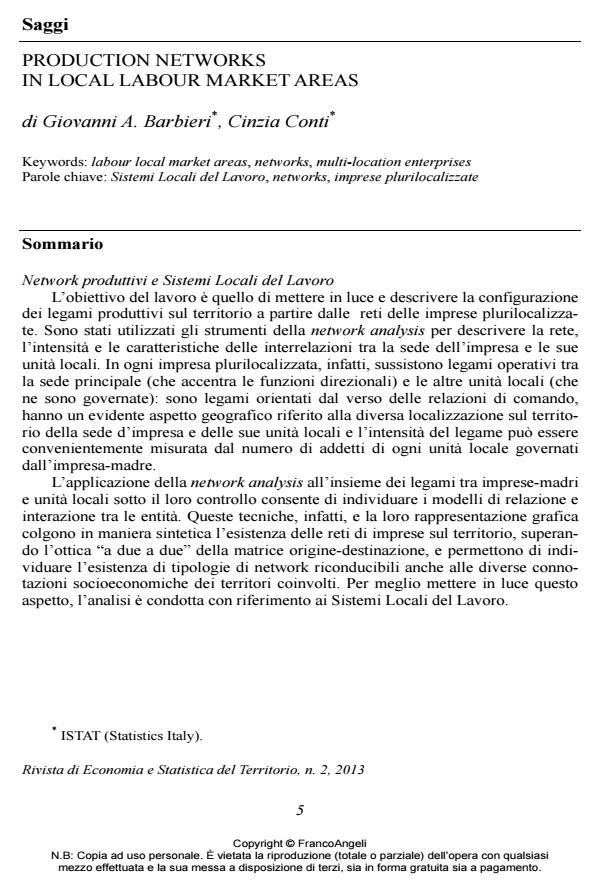Network produttivi e Sistemi Locali del Lavoro
Journal title RIVISTA DI ECONOMIA E STATISTICA DEL TERRITORIO
Author/s Giovanni A. Barbieri, Cinzia Conti
Publishing Year 2013 Issue 2013/2
Language Italian Pages 17 P. 5-21 File size 982 KB
DOI 10.3280/REST2013-002001
DOI is like a bar code for intellectual property: to have more infomation
click here
Below, you can see the article first page
If you want to buy this article in PDF format, you can do it, following the instructions to buy download credits

FrancoAngeli is member of Publishers International Linking Association, Inc (PILA), a not-for-profit association which run the CrossRef service enabling links to and from online scholarly content.
The aim of the paper is to describe the structure, the dimension and the features of the net designed on the territory by the relationships between the headquarters and the local units of multi-location enterprises in Italy. Methods and Results Network analysis has been applied to spot these relationships, considering, as nodes, the different territorial locations (at the labour local market areas detail) of the headquarters and of the local units and, as ties, the number of workers in local units employed by the multi-location enterprise. In this way, each tie reveals the existence (and the intensity) of a productive relationship between two different territories. The results of the study clearly show that in Italy the system of multi-location enterprises is shaped as a "small world" (Milgram, 1967; Watts and Strogatz, 1998), and also as a scale-free network with a limited number of hubs (Barabási and Albert, 1999). Conclusions The analysis underlines that the interactions among enterprises and among territories is a key factor for development and innovation. On the other hand, hubs make the network vulnerable to non-random shocks. Keywords: labour local market areas, networks, multi-location enterprises
Keywords: Labour local market areas, networks, multi-location enterprises
Jel codes: J, L
Giovanni A. Barbieri, Cinzia Conti, Production networks in local labour market areas in "RIVISTA DI ECONOMIA E STATISTICA DEL TERRITORIO" 2/2013, pp 5-21, DOI: 10.3280/REST2013-002001